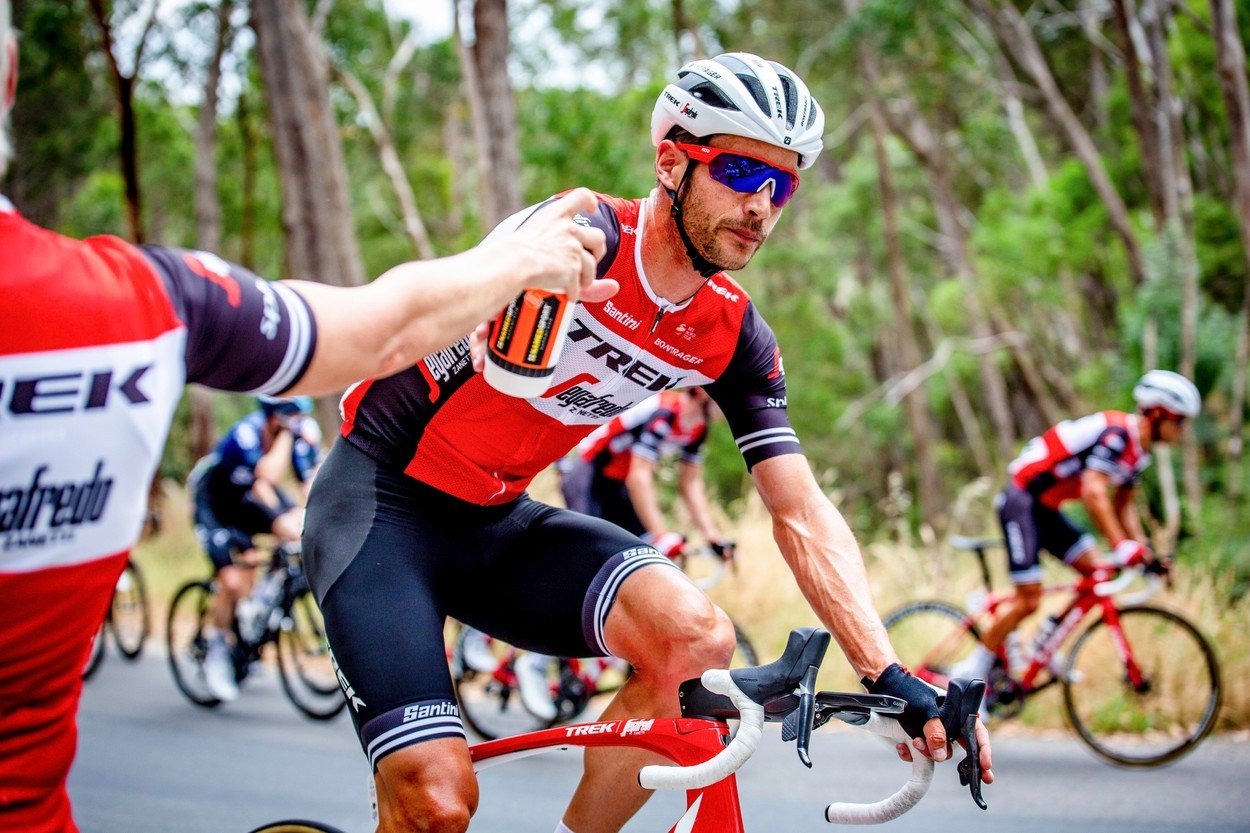Early breakfast
The first meal of a race day depends a lot on its timing. If you have a breakfast 3-4 hours before the race starts, you can eat quite a lot. Try getting about 3 g of carbs per 1 kg of body weight to top off your glycogen reserves. A combination of slow and fast carbs, like porridge with a banana, works well. Make sure to add about 20 g of quality protein to protect your muscles. A three-egg omelette is a great choice, but Greek yogurt with some nuts is also an option. In case you only have about 90 minutes until the start, you should limit protein, porridge without the omelette should be enough. You can also have a piece of fruit or an energy bar about 30-60 minutes before your race as a little snack. But whatever your timing, avoid vegetables and added fats as they would slow down digestion.
60 g of carbs per hour
Now that you’re in the saddle, you have to continue fuelling if you want to maintain a hard pace all race long. Most people need between 0.5-1 g of carbs per 1 kg of body weight per hour to perform at race pace. The average athlete can only safely digest around 60 g of carbs per hour. You might be able to get in 90 g per hour with a multi-source energy gel, but for most of the race it’s best to aim for 60 g per hour to be safe from digestive issues. And don’t forget to count the carbs in your drinks too.
Eat on a schedule
It’s essential to start fuelling about 20-30 minutes after the race starts and then continue eating on a schedule. Never wait until you get hungry! Once you get hungry, you can never eat enough to catch up. It’s also a good idea to look at the elevation profile of your race to plan the best spots where you can get the most fuel in. Flats and mild uphills are ideal for getting solid food in. Steep climbs are best done on liquids only. Avoid fuelling on downhills, as the increased risk of crashing is not worth it.

500 to 1000 ml of fluid per hour
Most people need between 500 to 1000 ml of fluids per hour of riding to stay at peak performance. Start drinking about 30 minutes into the race and get in the habit of taking a sip every 10 minutes or so. Make sure that you also get some electrolytes and carbs in your water bottle, as they can accelerate rehydration and keep your body working even when you sweat a lot. Go for hypotonic drinks if it’s really hot and you tend to sweat a lot, otherwise isotonic drinks are ideal. A bidon full of plain water won’t go amiss when you need to hydrate and your stomach wants a break from sugar.
Test in training
Even if you calculate the amount of water, electrolytes, and carbs perfectly, your body can always react in an unexpected way. It’s essential to do at least a couple of training sessions where you ride at race pace and try eating and drinking the same things you’re going to eat and drink at the race. Test various brands of gels, bars, and drinks and see how your gut reacts to them. It also helps to practice eating on a schedule and handling food on the bike. Never try a new product on race day, no matter how appealing the marketing is, that’s a recipe for disaster.




